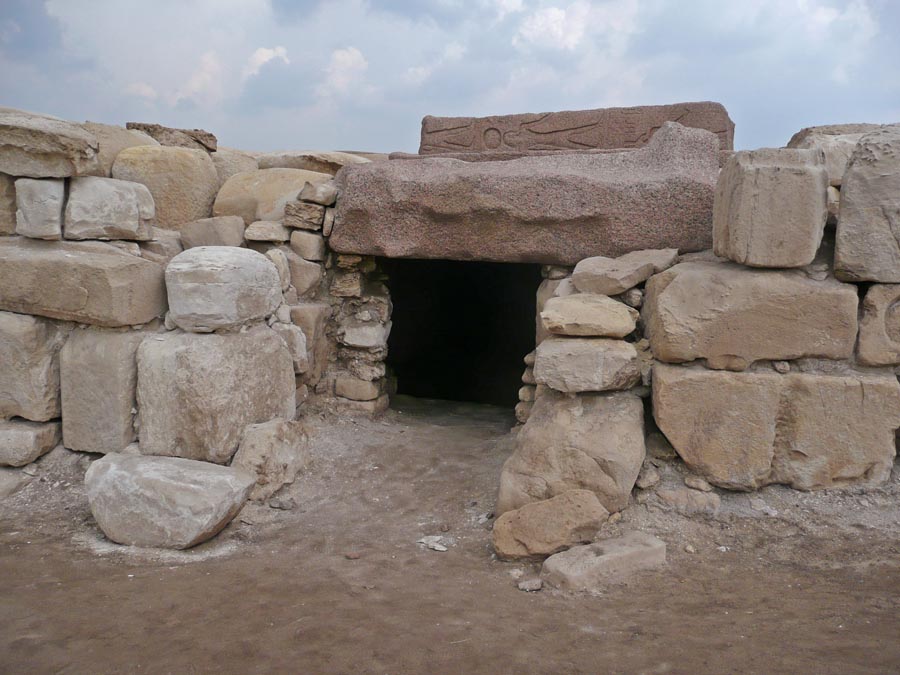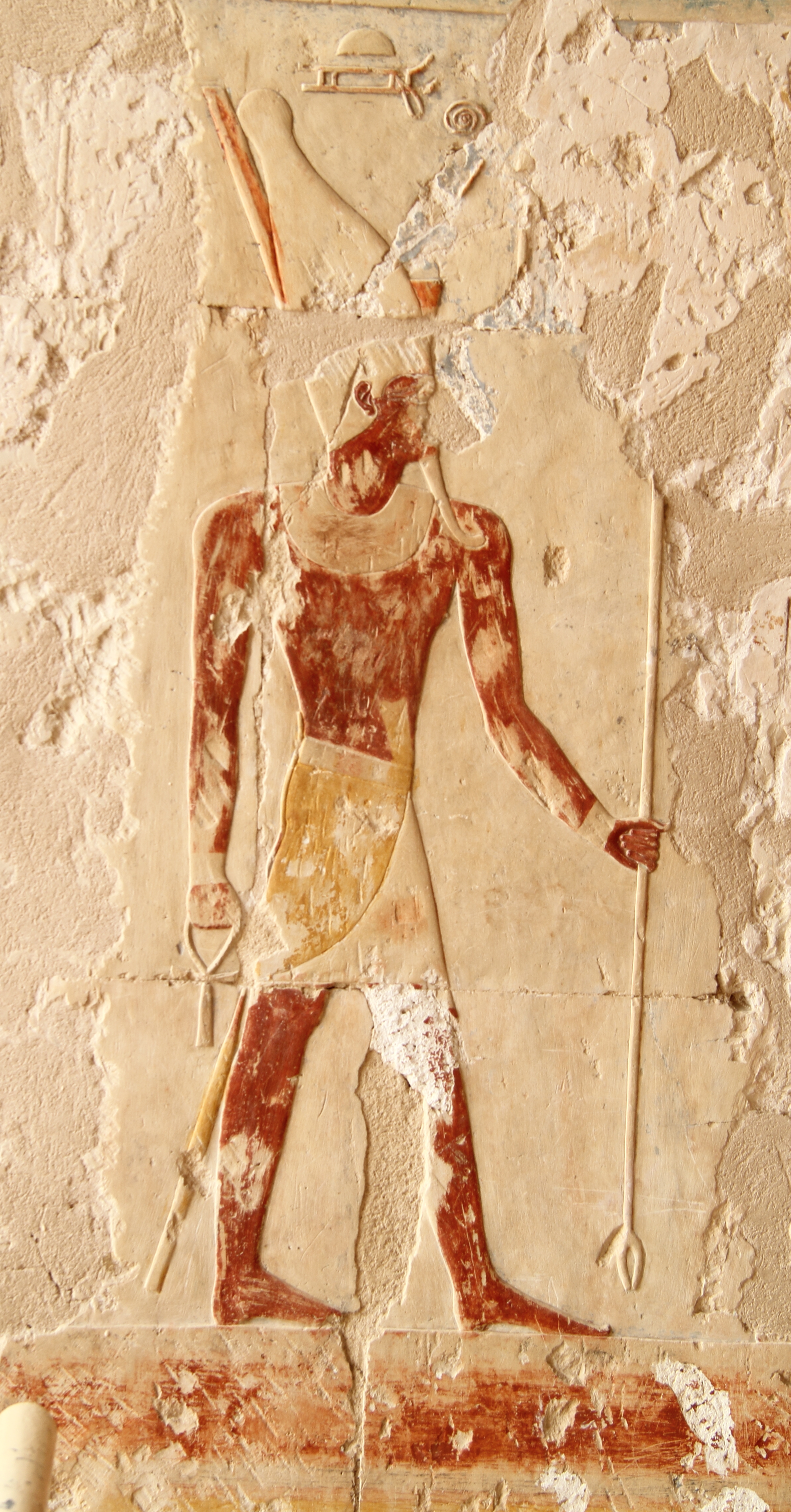|
Ankhkherednefer
Ankhkherednefer ( egy, ˁnḫ ẖrd nfr, lit='The beautiful child lives') (name formerly read as Ankhrenepnefer, or Ankhsherynefer) was an ancient Egyptian official known from a block statue found in the Tell el-Maskhuta (perhaps ancient Pithom). The statue, made of red granite is now in the British Museum (BM 1007). Biography Ankhkherednefer served under king Osorkon II whose name appears on the statue. On the statue he bears the titles: ''Great Inspector of the Palace''; ''Good scribe of the Temple of Atum, Lord of Tura'' and ''Supreme Lieutenant of the Pharaoh''. References ;Notes ;Citations Literature * Edouard Naville: ''The Store-city of Pithom and the Route of the Exodus'', London, 1885, S. 13-14 with English translations of the texts, Frontispice, Text on plate IV)online *Karl Jansen-Winkeln Karl may refer to: People * Karl (given name), including a list of people and characters with the name * Karl der Große, commonly known in English as Charlemagne * Karl Ma ... [...More Info...] [...Related Items...] OR: [Wikipedia] [Google] [Baidu] |
Osorkon II
Usermaatre Setepenamun Osorkon II was the fifth king of the Twenty-second Dynasty of Ancient Egypt and the son of King Takelot I and Queen Kapes. He ruled Egypt from approximately 872 BC to 837 BC from Tanis, the capital of that dynasty. After succeeding his father, Osorkon II was faced with the competing rule of his cousin, King Harsiese A, who controlled both Thebes and the Western Oasis of Egypt. Potentially, Harsiese's kingship could have posed a serious challenge to the authority of Osorkon, however, when Harsiese died in 860 BC, Osorkon II acted to ensure that no king would replace Harsiese. He appointed his son, Nimlot C, as the high priest of Amun at Thebes, which would have been the source for a successor to Harsiese. This consolidated the king's authority over Upper Egypt and thereafter, Osorkon II ruled over a united Egypt. Osorkon II's reign was a time of prosperity for Egypt and large-scale monumental building ensued. Osorkon II was the last king of the Twenty-sec ... [...More Info...] [...Related Items...] OR: [Wikipedia] [Google] [Baidu] |
Atum
Atum (, Egyptian: ''jtm(w)'' or ''tm(w)'', ''reconstructed'' ; Coptic ''Atoum''), sometimes rendered as Atem or Tem, is an important deity in Egyptian mythology. Name Atum's name is thought to be derived from the verb ''tm'' which means 'to complete' or 'to finish'. Thus, he has been interpreted as being the "complete one" and also the finisher of the world, which he returns to watery chaos at the end of the creative cycle. As creator, he was seen as the progenitor of the world, the deities and universe having received his vital force or ka. Origins Atum is one of the most important and frequently mentioned deities from earliest times, as evidenced by his prominence in the Pyramid Texts, where he is portrayed as both a creator and father to the king. Several writings contradict how Atum was brought into existence. Some state Atum was created by himself by saying his name, while others argue he came out from a blue lotus flower or an egg. Role In the Heliopolitan creation myt ... [...More Info...] [...Related Items...] OR: [Wikipedia] [Google] [Baidu] |
Tora, Egypt
Tura ( arz, طرة ' , , ) was the primary quarry for limestone in ancient Egypt. The site, which was known by the ancient Egyptians as ''Troyu'' or ''Royu'', is located about halfway between modern-day Cairo and Helwan. Its ancient Egyptian name was misinterpreted by the ancient Greek geographer Strabo, who thought it meant it was inhabited by Trojans, thus the Hellenistic city was named Troia. The site is located by the modern town of ''Tora'' in the Cairo Governorate. Ancient mining town The limestone from Tura was the finest and whitest of all the Egyptian quarries, so it was used for facing stones for the richest tombs, as well as for the floors and ceilings of mastabas, which were otherwise made of mudbrick. It was used during the Old Kingdom and was the source of the limestone used for the "Rhomboidal Pyramid" or Bent Pyramid of Sneferu, the Great Pyramid of Khufu, the sarcophagi of many Old Kingdom nobles, the pyramids of the Middle Kingdom, and certain temples ... [...More Info...] [...Related Items...] OR: [Wikipedia] [Google] [Baidu] |
Block Statue (Egyptian)
The block statue is a type of memorial statue that first emerged in the Middle Kingdom of Egypt. The block statue grew in popularity in the New Kingdom and the Third Intermediate Period, and by the Late Period, this type of statue was the most common. These statues were used in temples typically as funerary monuments of non-royal yet important individuals. According to primary sources from the New Kingdom, the posture of the statue was possibly intended to resemble a guardian seated in the gateway of a temple. In addition, their simple shape provided ample flat surfaces for inscriptions of offerings and invocations. Block statues consist of a man squatting with his knees drawn up to his chest and his arms folded on top his knees. Often, these men are wearing a "wide cloak" that reduces the body of the figure to a simple block-like shape. Most of the detail is reserved for the head of the individual being depicted. In some instances the modeling of the limbs has been retained by t ... [...More Info...] [...Related Items...] OR: [Wikipedia] [Google] [Baidu] |
Tell El-Maskhuta
Pithom ( Ancient Egyptian: ; Hebrew: ; Ancient Greek: or ) was an ancient city of Egypt. Multiple references in ancient Greek, Roman, and Hebrew Bible sources exist for this city, but its exact location remains somewhat uncertain. A number of scholars identified it as the later archaeological site of Tell el-Maskhuta ( ar, تل المسخوطة, translit=Tall al-Masḫuṭa). Others identified it as the earlier archaeological site of Tell El Retabeh ( ar, تل الرتابة, translit=Tall al-Ratāba). The name This name comes from Hebrew which was taken from the Late Egyptian name (from earlier ) "House of Atum". Biblical Pithom Pithom is one of the cities which, according to Exodus , was built for the Pharaoh of the oppression by the forced labor of the Israelites. The other city was Ramses; and the Septuagint adds a third, "'' On'', which is Heliopolis." These cities are called by a Hebrew term rendered in the Authorized Version "treasure cities" and in the Revise ... [...More Info...] [...Related Items...] OR: [Wikipedia] [Google] [Baidu] |
Pithom
Pithom ( Ancient Egyptian: ; Hebrew: ; Ancient Greek: or ) was an ancient city of Egypt. Multiple references in ancient Greek, Roman, and Hebrew Bible sources exist for this city, but its exact location remains somewhat uncertain. A number of scholars identified it as the later archaeological site of Tell el-Maskhuta ( ar, تل المسخوطة, translit=Tall al-Masḫuṭa). Others identified it as the earlier archaeological site of Tell El Retabeh ( ar, تل الرتابة, translit=Tall al-Ratāba). The name This name comes from Hebrew which was taken from the Late Egyptian name (from earlier ) "House of Atum". Biblical Pithom Pithom is one of the cities which, according to Exodus , was built for the Pharaoh of the oppression by the forced labor of the Israelites. The other city was Ramses; and the Septuagint adds a third, "'' On'', which is Heliopolis." These cities are called by a Hebrew term rendered in the Authorized Version "treasure cities" and in the Revise ... [...More Info...] [...Related Items...] OR: [Wikipedia] [Google] [Baidu] |
British Museum
The British Museum is a public museum dedicated to human history, art and culture located in the Bloomsbury area of London. Its permanent collection of eight million works is among the largest and most comprehensive in existence. It documents the story of human culture from its beginnings to the present.Among the national museums in London, sculpture and decorative and applied art are in the Victoria and Albert Museum; the British Museum houses earlier art, non-Western art, prints and drawings. The National Gallery holds the national collection of Western European art to about 1900, while art of the 20th century on is at Tate Modern. Tate Britain holds British Art from 1500 onwards. Books, manuscripts and many works on paper are in the British Library. There are significant overlaps between the coverage of the various collections. The British Museum was the first public national museum to cover all fields of knowledge. The museum was established in 1753, largely b ... [...More Info...] [...Related Items...] OR: [Wikipedia] [Google] [Baidu] |
Karl Jansen-Winkeln
Karl may refer to: People * Karl (given name), including a list of people and characters with the name * Karl der Große, commonly known in English as Charlemagne * Karl Marx, German philosopher and political writer * Karl of Austria, last Austrian Emperor * Karl (footballer) (born 1993), Karl Cachoeira Della Vedova Júnior, Brazilian footballer In myth * Karl (mythology), in Norse mythology, a son of Rig and considered the progenitor of peasants (churl) * ''Karl'', giant in Icelandic myth, associated with Drangey island Vehicles * Opel Karl, a car * ST ''Karl'', Swedish tugboat requisitioned during the Second World War as ST ''Empire Henchman'' Other uses * Karl, Germany, municipality in Rhineland-Palatinate, Germany * ''Karl-Gerät'', AKA Mörser Karl, 600mm German mortar used in the Second World War * KARL project, an open source knowledge management system * Korean Amateur Radio League, a national non-profit organization for amateur radio enthusiasts in South Korea * KARL, ... [...More Info...] [...Related Items...] OR: [Wikipedia] [Google] [Baidu] |
People Of The Twenty-second Dynasty Of Egypt
A person ( : people) is a being that has certain capacities or attributes such as reason, morality, consciousness or self-consciousness, and being a part of a culturally established form of social relations such as kinship, ownership of property, or legal responsibility. The defining features of personhood and, consequently, what makes a person count as a person, differ widely among cultures and contexts. In addition to the question of personhood, of what makes a being count as a person to begin with, there are further questions about personal identity and self: both about what makes any particular person that particular person instead of another, and about what makes a person at one time the same person as they were or will be at another time despite any intervening changes. The plural form "people" is often used to refer to an entire nation or ethnic group (as in "a people"), and this was the original meaning of the word; it subsequently acquired its use as a plural form of per ... [...More Info...] [...Related Items...] OR: [Wikipedia] [Google] [Baidu] |





_1938.jpg)